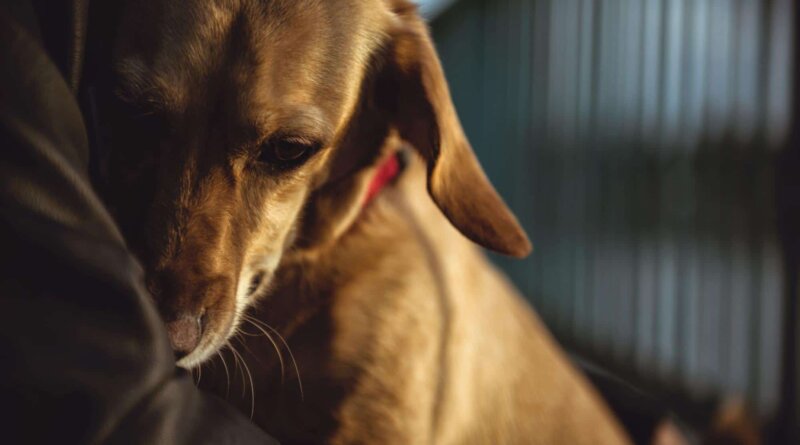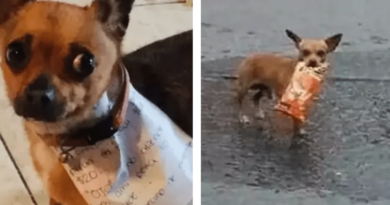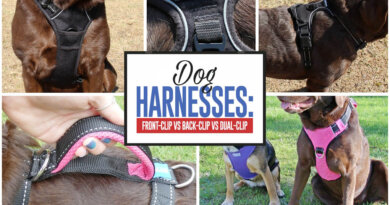How To Meet A Timid Dog | Gain a Dog’s Trust
When meeting any new dog, dog owners and pack leaders should approach with caution. Even if you are a dog expert, it is still best to take things slow and come at new dogs with a gentle, easy-going personality. You never know what they are going through or have been through, so it is always best to move with the utmost care.
In addition, dogs often show aggression when they are afraid. While it might be tempting to know how to work with an aggressive dog and gain their trust, this is not always possible if there is genuine fear in the animal. Sometimes it’s best to give a scared dog space instead of interacting with them.
How to Tell If a Dog is Scared
First, you must learn how to tell when a dog is scared. Sometimes you can pick up on their body language that they aren’t comfortable with your presence, but many dogs will try and hide any fear they have for you.
Dogs are only able to communicate fear and anxiety through their body language. So as a dog owner, it is crucial to recognize the signs of fear and react accordingly.
- Tucking their tail between their legs
- Avoiding eye contact
- A body language that is still or frozen
- Growling
- Shaking/trembling
- Raised hair on the back of their neck
- Panting
- Trying to hide
- No control over bladder
These are the most common signs of dog anxiety and fear. If you see these signs in your dog, let them know that you are their friend! This way, they can feel more comfortable around people and not act out when they are uncomfortable.
Tips for Approaching a Scared Dog
When you approach a dog who is afraid or shy, the first step should be to look at their body language. If they have tucked their tail between their legs and show signs of fear, then respect the dog’s space.
Stay in the area and let them know that you are there for them by communicating with your body language.
Be Aware of Your Positioning
Try standing to the side of the dog who is scared, rather than directly in front of them. This way, you can avoid getting in their area and not appear as a threat. As dog lovers, we are eager to make new friends, but sometimes we must remember that not all dogs will be immediately friendly when we come into their space.
Avoid Eye Contact
For humans, eye contact is a sign of respect and trust, but it can appear more threatening for dogs. When meeting a timid or scared dog, try not to make direct eye contact with them at all. Instead, look around the dog’s face and let them know you are there by talking in a gentle tone.
Sitting Down is Often the Best Approach
If you see a dog who appears to be scared, try sitting down and looking at them from their level. Doing this shows that you are not an immediate threat and want to get closer so they can decide on how to proceed.
Move Slowly
If you get the dog’s attention and they look at you, continue to keep your movements slow. Dogs can be very sensitive to how we move, so taking it slow will show them that you’re not here to cause any harm.
Don’t Force It
Lastly, be sure never to force a dog to get closer if they don’t want to. If you see the dog not responding to your other efforts, it is best to back off and try again later.
Be patient with the dog and give them time to realize that you have their best interest at heart.
You never want a dog who is afraid to feel agitated or threatened when meeting new dog-loving friends!
Walking With a Fearful Dog
When walking a fearful dog outside, try to communicate with them softly throughout the walk. This dog is already nervous, so your tone should be gentle and quiet. Yelling at anything could spook them further.
Keep Them on a Leash
Leading the dog with the leash will keep your dog in closer contact with you at all times, and they will feel more confident to explore. When using a leash, you should always try to avoid quick movements and walk at their pace.
Let Them Do What They Please
As you walk, let the dog explore and sniff at their own pace. You do not want to go so slowly that you are holding them back, but if they stop to look at something, just let them be.
Exploration will let them get comfortable with the environment and more familiar with your walking route.
After the first walk, timid dogs will often greet you with less fear during your future visits. They’ll move closer and will be more willing to walk around you. Even most dogs that act defensive or aggressive at first are still open to building a relationship; it just takes patience and time.
Gaining a Dog’s Trust
Your dog’s trust is an important thing to have when you are a dog owner. If a dog does not trust you, they can lash out in anger or become aggressive towards you when you’re least expecting it.
But it can be hard to gain a dog’s trust, especially when they are timid or scared of people. Some dogs may have had bad experiences in the past, such as being abused by their previous owner. If you want your dog to love you and trust you unconditionally, then we recommend trying out these strategies.
Make a Good First Impression
If you’re meeting a friend’s dog for the first time, be sure that the dog is aware that you are friendly to its owner and has had an excellent first experience with you. If not, it might be best to leave the dog alone for now and let it come to you.
Once you get a chance to meet the dog, try sitting down next to them. You can try simply talking to them in a friendly tone and let them move freely.
Remain Calm and Assertive
Dog’s can read our energy and body language very well, so if you can remain calm and assertive, they will see that you are trustworthy. Being assertive means being extremely patient with the dog, especially if they appear scared.
Do Some Dog Activities
Whether you are watching a dog for a friend or dog-sitting, you can give the dog a reason to trust you. Doing their favorite dog activities together, such as running or playing fetch, is a great way to let them become comfortable around you.
Playing will allow the dog to see that you’re there to have fun with them and not just be another person they need to avoid. Ask the owner what their favorite activities are and try doing them if they seem ready!
Avoid Comforting Them
Whenever you encounter an anxious or timid dog, it’s natural to comfort and calm them. Though this is well-meaning, you are inadvertently rewarding their behavior and validating it for the future.
It would be best if you quietly ignored a timid dog’s nervousness and instead offered him something that interests him, like a squeaky toy. Once they are distracted by it, praising them will grow their confidence and strengthen your bond.
With these tips, you will be sure to show the dog how much they are cared for and that your presence is something they do not have to fear!





As I website owner I believe the content material here is real wonderful, appreciate it for your efforts.
Hey! I know this is kinda off topic but I’d figured I’d ask. Would you be interested in trading links or maybe guest writing a blog post or vice-versa? My blog addresses a lot of the same subjects as yours and I believe we could greatly benefit from each other. If you’re interested feel free to shoot me an email. I look forward to hearing from you! Wonderful blog by the way!
Fantastic site you have here but I was curious about if you knew of any discussion boards that cover the same topics talked about here? I’d really like to be a part of community where I can get advice from other knowledgeable individuals that share the same interest. If you have any recommendations, please let me know. Kudos!
I relish, cause I found exactly what I used to be having a look for. You’ve ended my 4 day lengthy hunt! God Bless you man. Have a great day. Bye
You must take part in a contest for top-of-the-line blogs on the web. I will advocate this website!
You really make it seem so easy along with your presentation however I to find this topic to be actually something that I believe I would never understand. It kind of feels too complex and very vast for me. I’m looking ahead on your next put up, I?¦ll attempt to get the hang of it!